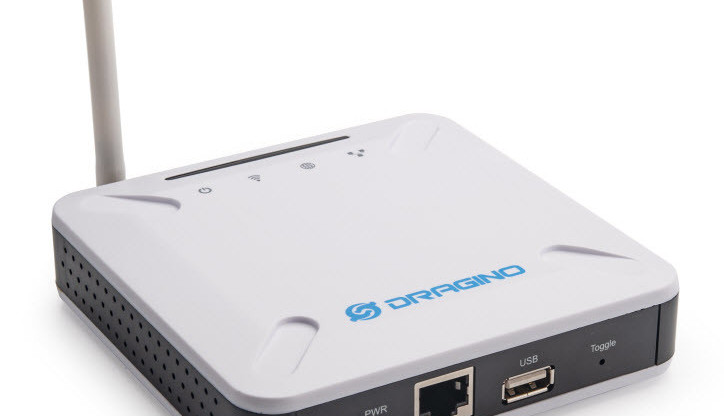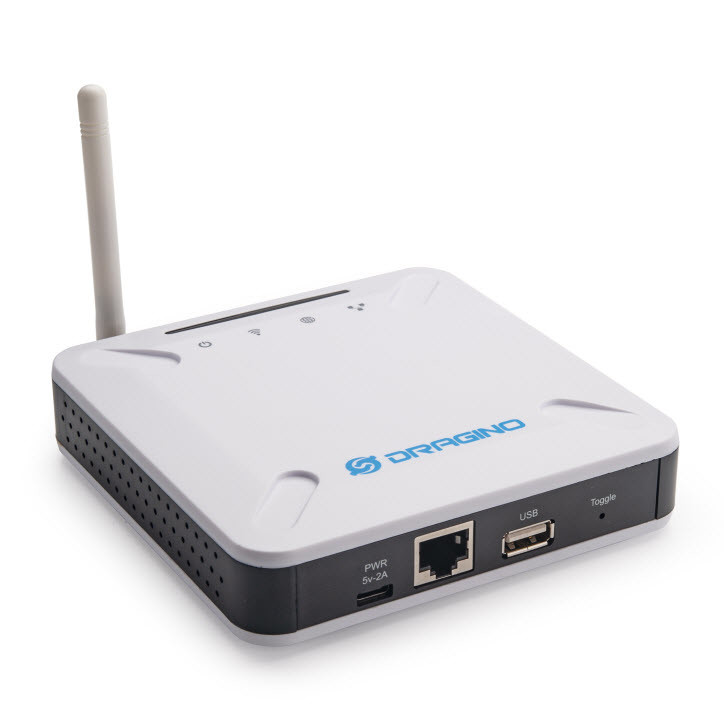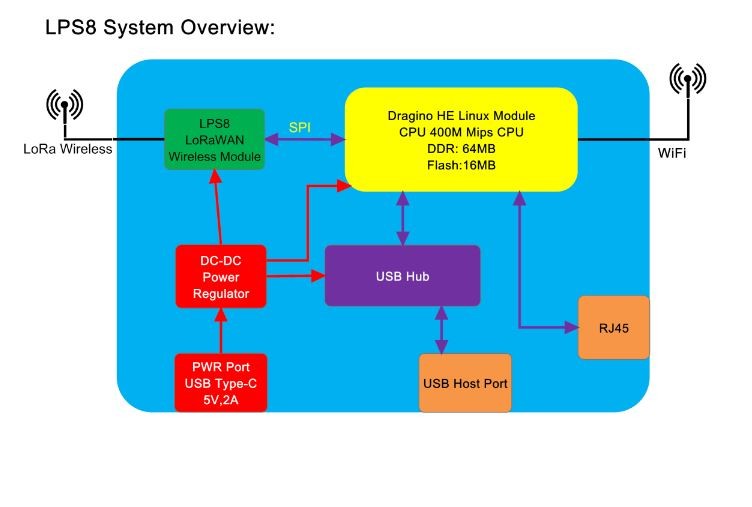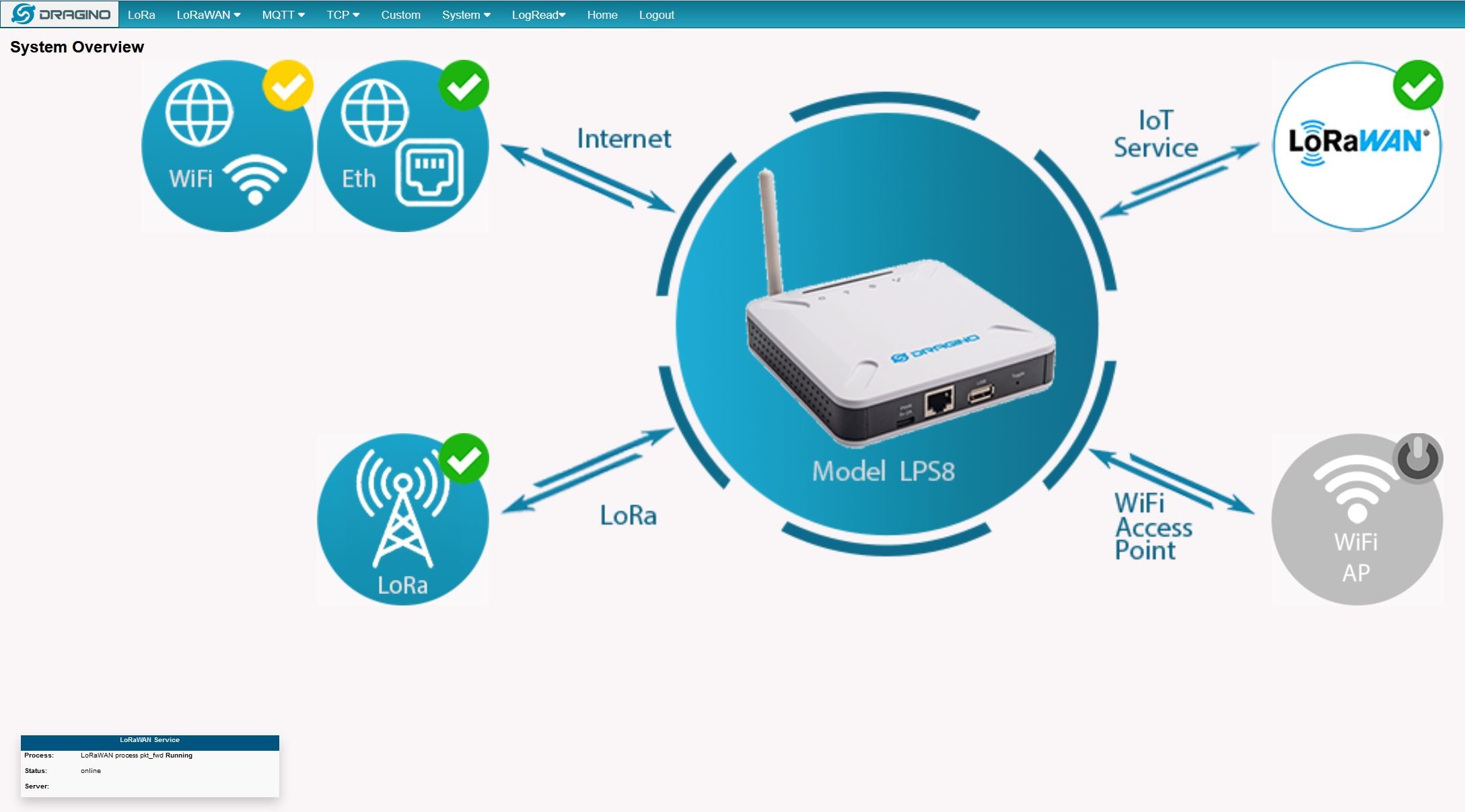Dragino LPS8 Indoor Gateway
on

The Dragino LPS8
The Dragino LPS8 Indoor Gateway (Figure 1) is housed in a plastic enclosure and could easily be mistaken for a Wi-Fi router.

The electronics inside are powered by a small Atheros (today Qualcomm) AR9331 Wi-Fi SoC clocked at 400 MHz which is specifically designed for use in router platforms and access points. With 64-MB RAM and 16-MB Flash, its processing power is not spectacular when compared with something like a Raspberry Pi Zero 2 W, but it is more than enough for the functions that the gateway needs to perform. The SoC also supports Wi-Fi according to 802.11 b/g/n and provides a 10/100 Mbit LAN port. The communication rates available are more than capable of handling the relatively slow data rate used by LoRaWAN. The gateway itself does not have to provide a lot of computing power either, as it only takes care of the integrated LoRa transceiver module and forwards the data to the Internet. A block diagram can be seen in Figure 2.

The LoRa transceiver is a combination of a Semtech SX1308 LoRa baseband chip (Figure 3) and two SX1257 front-end modules (Figure 4).


This combination provides the conversion from the radio interface to Ethernet. The gateway is powered via its USB type C port and requires a 5 V/2 A (10 W) mains adapter.
As the name of the gateway suggests, the device is not weatherproof and is intended for use inside a building, so the environment should be dry and relatively dust-free. The building structure and internal walls will reduce the radio coverage compared to an equivalent device mounted outdoors in free space with a mast-mounted antenna.
The LPS8 Manual, Firmware and Setup
The most recent version of the Dragino manual (available online) describes how to set up the gateway. The manual has been continuously maintained since the product was released and reflects the features and updates of the current firmware. This is indeed praiseworthy; I just wish that some other product manufacturers would adopt the same attention to detail when it comes to documentation.
The firmware itself is also well maintained. The current release is dated November 4, 2021 (as of December 15, 2021). It’s advisable to update to the latest version before the gateway is put into service. That will ensure any known bugs or security weaknesses should be ironed out as far as possible.
The manual guides you through the setup. All you need to do is configure the network appropriately and make the settings for the LoRaWAN link (e.g., The Things Network). From this point, the LoRaWAN gateway is ready for use (Figure 5).

An OpenWRT Substructure
Even though the first page of the web interface doesn’t suggest it, the Linux-based Open Wireless Router (OpenWRT) firmware is used as the basis for the Dragino LPS8 indoor gateway. This not only takes care of the LoRaWAN gateway function, but also provides a number of other settings for the router (IP addresses, forwarding, Wi-Fi).
Thanks to the OpenWRT substructure, an LTE or 5G modem can also be connected to the gateway USB port if no other link to the Internet is possible at the device’s location. If you like, you can also access the Linux command line using SSH. (Do so at your own risk!) Additional packages can be installed via the web interface or command line to add more functions to the device.
A Reliable Solution
I have personally been using a Dragino LPS8 now for over a year. During that time, it has proved to be a low-maintenance and reliable LoRaWAN gateway, which is really all you could ask of such a device. It continues to do a good job servicing my various LoRaWAN nodes and gives excellent coverage throughout the building (and surrounding area). If you are thinking of installing an inexpensive LoRaWAN gateway in a domestic environment, you should take a closer look at the Dragino LPS8 Indoor Gateway, which is currently available in the Elektor Store.
Questions or Comments?
Do you have any technical questions or comments about this article? Contact the author at mathias.claussen@elektor.com or contact the Elektor team at editor@elektor.com.


Discussion (0 comments)